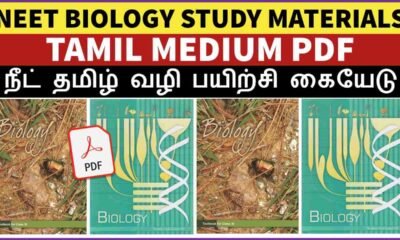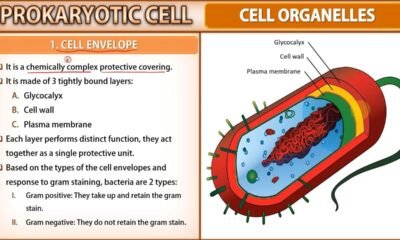Blog
Mollusca General Characteristics, Classification and Examples | Free Biology Notes

After reading this article you will learn about Mollusca General Characteristics, Classification and Examples
Mollusca General Characteristics
- It is second largest phylum which includes soft bodied and shelled animals
- Body is unsegmented and covered with calcareous shell
- Body is divisible into head, humb and foot
- Head: well developed head, containing high concentration of sensory and nervous functions
- Hump or visceral mass: Containing all organs of body
- Foot: Muscular and help for locomotion
- Mollusk’s body is covered by soft and spongy layer of skin is called mantle or pallium
- Space between hump and mantle is called mantle cavity
- Mantle secretes an external calcareous shell (CaCo3 + Concheolin protein)
- Digestive system is complete. Buccal cavity contain rasping organ for feeding called radula. Anus opens into the mantle cavity
- Respiration is usually by lungs on land and by gills in water
- Circulatory system is open type.
- Excretory system include 1 or 2 pairs of kidneys known as kebers organs or organ of bojanus
- Excretory matter is ammonia or uric acid
- Nervous system is well developed and comprises 2 or 4 pairs of ganglia
- Sense organs
- Eye: Present over a stalk called ommatophore in some molluscus
- Statocyst: Body equilibroum in foot
- Osphradium: Chemoreceptor for testing chemical and nature of water
- Sexes are separate in most of the molluscus
- Fertilization may be external or internal
- They are generally oviparous with indirect development.
- Trochophore is very common larva of molluscus
Classification of Mollusca
Class 1. Aplacophora
Exclusively deep marine. Worm like appearance with no shells. They have no eyes, tentacles and head. E.g. Neomenia, Chaetoderma
Class 2. Monoplacophora
They are marine. Body is enclosed dome-shaped outer shell. broad and flat muscular foot is present. E.g. Neopilina
Class 3. Polyplacophora
Exclusively marine. The shell is composed of 8 plates. The radula is well developed. The foot is flat and ventral. E.g. Chiton, Cryptochiton
Class 4. Scaphopoda
Found in the marine environment. Shell is tubular opening at both ends. The foot is conical and used for digging. E.g. Dentalium, Pulsellum
Class 5. Bivalvia
Fresh water and marine forms. Body is enclosed by a bivalved shell. The foot is wedge-shaped and used for digging. E.g. Mussels, Unio, Mytilus
Class 6. Gastropoda
These are either aquatic or terrestrial. The shell is spirally coiled (univalve). The foot is ventral and muscular. E.g. Hilex, Limax, Pila
Class 7. Cephalopoda
Found in marine. The shell is either external, internal or absent. The foot is modified into foot in the head. E.g. Octopus, Loligo, Sepia

 Blog4 months ago
Blog4 months ago[PPT] Human Reproduction Class 12 Notes
- Blog4 months ago
PG TRB Botany Study Material PDF Free Download

 Blog4 months ago
Blog4 months ago[PPT] The living world Class 11 Notes

 Entertainment4 months ago
Entertainment4 months agoIbomma Bappam: Redefines Telugu Streaming Trend
- Blog4 months ago
Class 12 Biology Notes Chapter wise PPT
- Blog4 months ago
Contribution of Indian Phycologists (4 Famous Algologist)

 Blog4 months ago
Blog4 months agoDownload NEET Biology Study Materials in Tamil

 Blog4 months ago
Blog4 months agoCell The Unit of Life Complete Notes | Class 11 & NEET Free Notes












